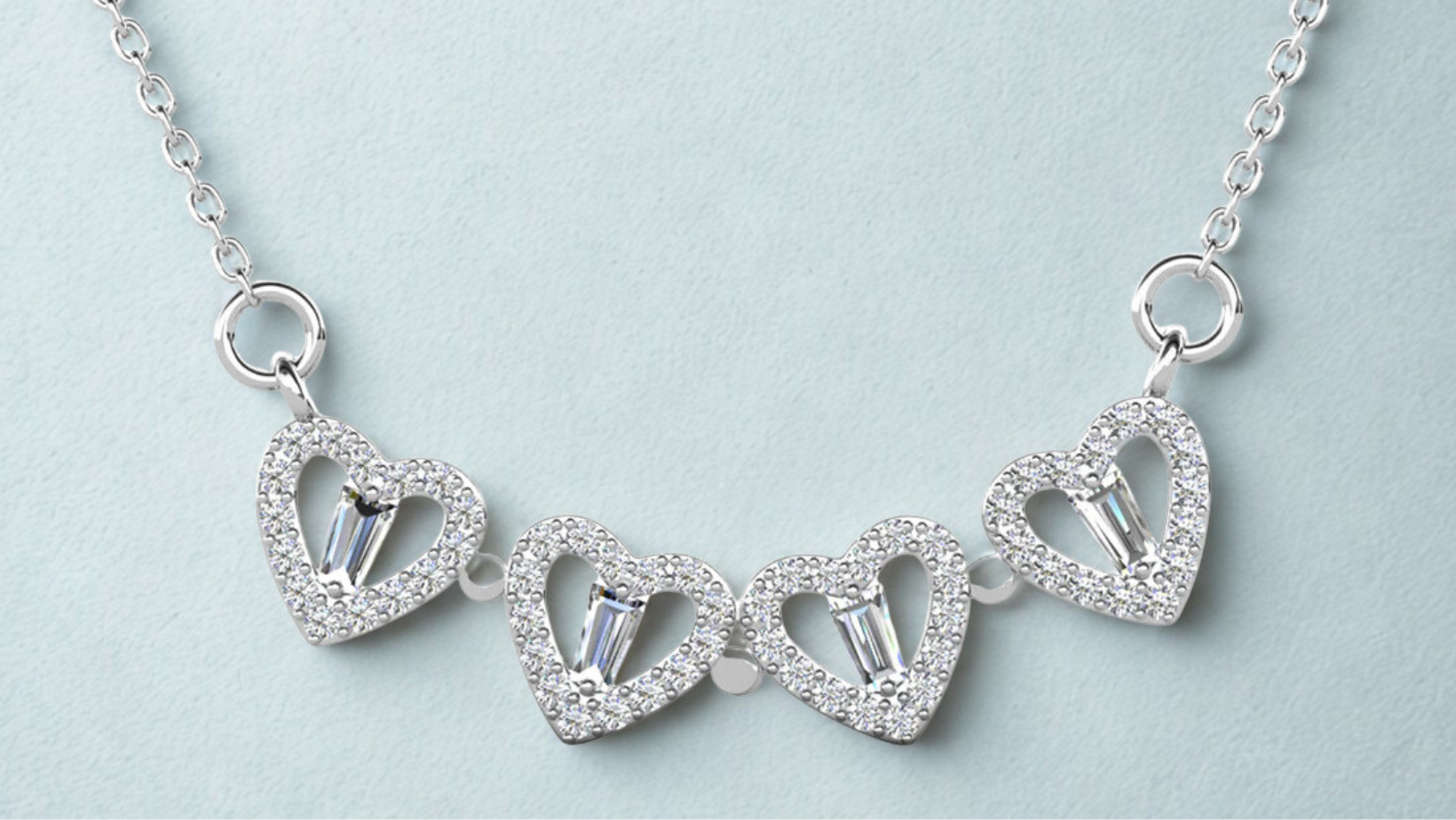The Cultural Significance of Jewelry Around the World

Jewelry has been an intrinsic part of human history for thousands of years, transcending geographical, cultural, and temporal boundaries. Whether it’s a symbol of status, spirituality, love, or tradition, jewelry holds deep cultural significance across the globe. From the delicate gold of ancient Egypt to the ornate beadwork of the Maasai people, jewelry is far more than an accessory—it is a reflection of the values, beliefs, and identity of a community. In this blog, we’ll explore the cultural significance of jewelry around the world, diving into its symbolism, historical context, and how different societies continue to use jewelry to express individuality and heritage.
1. India: Jewelry as a Spiritual and Social Symbol
In India, jewelry is an integral part of life, deeply connected to religious, cultural, and social meanings. It’s not just about adornment—each piece of jewelry tells a story about the person wearing it, their social status, marital status, and even religious affiliations.
-
Mangalsutra: One of the most culturally significant pieces of jewelry in India is the mangalsutra, a necklace worn by married women. It is similar in symbolism to a wedding ring in Western cultures. Traditionally, it’s made of black beads and gold, and the wife is expected to wear it as long as her husband is alive, symbolizing protection and unity in marriage.
-
Gold: In Indian culture, gold is not just a precious metal but a symbol of wealth, prosperity, and purity. Gold jewelry is often passed down through generations, and its value transcends material worth. During major life events, such as weddings, gold is gifted as a form of good fortune.
-
Religious Significance: Jewelry plays a crucial role in religious rituals. For instance, the use of nose rings, bangles, and anklets has its roots in ancient scriptures and Vedic texts, signifying different virtues, blessings, and rites of passage.
2. Egypt: Jewelry as a Symbol of Power and Protection
Ancient Egyptians were pioneers in jewelry-making, using metals like gold and silver, along with semi-precious stones, to craft intricate designs. Jewelry in Egypt was not just a form of decoration but a signifier of status, power, and divine protection.
-
Amulets: One of the most significant aspects of Egyptian jewelry is the use of amulets, which were believed to offer protection from evil spirits and ensure a safe passage to the afterlife. The Eye of Horus amulet, symbolizing protection, and the Scarab beetle, representing rebirth, were common among both royalty and commoners.
-
Pharaohs and Gold: For Egyptian pharaohs, jewelry was a sign of divine authority. Gold, thought to be the flesh of the gods, was used in crowns, necklaces, and even burial masks, as seen in the iconic gold mask of King Tutankhamun. The use of gold wasn’t just a display of wealth but also a means of connecting with the gods and securing eternal life.
-
Beaded Jewelry: Egyptians were also fond of brightly colored beaded jewelry, made from materials like lapis lazuli, carnelian, and turquoise. These were worn both in life and death, symbolizing wealth, health, and protection.
3. Africa: Jewelry as Cultural Heritage and Community Identity
Across Africa, jewelry is deeply embedded in cultural heritage, signifying status, wealth, and community identity. Each ethnic group has unique jewelry-making traditions, often tied to local materials and the landscape.
-
The Maasai Tribe: The Maasai people of Kenya and Tanzania are renowned for their intricate beadwork, which holds cultural and symbolic importance. The colors of the beads are significant—red symbolizes bravery and unity, blue represents the sky and rain, and green is the color of health and land. Maasai women are skilled at creating elaborate necklaces, earrings, and bracelets, which are often worn during important ceremonies, such as weddings and rites of passage.
-
Gold in West Africa: In West African nations like Ghana, gold jewelry holds cultural and spiritual significance. Among the Akan people, gold jewelry is a symbol of wealth and power, traditionally worn by chiefs and royalty. During important events, such as weddings and funerals, gold jewelry is a symbol of prosperity and is often passed down through generations.
-
Beaded Jewelry: Beadwork is a common jewelry form across many African cultures. In the Zulu community of South Africa, beads are used to send messages, with specific color combinations conveying different emotions and intentions, a form of visual communication through jewelry.
4. China: Jewelry as a Symbol of Harmony and Prosperity
Jewelry in China has long been tied to philosophical and spiritual beliefs, particularly in relation to the principles of harmony, balance, and prosperity.
-
Jade: Perhaps the most culturally significant material in Chinese jewelry is jade, revered for its beauty, durability, and symbolic meaning. Jade is often associated with purity, virtue, and immortality. In Chinese culture, it is believed to protect the wearer and bring good fortune. Jade jewelry, such as bracelets and pendants, is often gifted as a symbol of love and protection.
-
Pearls: Pearls have been highly valued in China for centuries, often symbolizing wealth, wisdom, and dignity. Historically, pearls were worn by emperors and the elite, signifying their status and connection to the divine.
-
Dragons and Phoenixes: Many pieces of Chinese jewelry feature intricate designs of dragons and phoenixes, both of which hold significant cultural symbolism. The dragon represents power, strength, and good fortune, while the phoenix symbolizes harmony, peace, and prosperity.
5. Native American Jewelry: Symbols of Spirituality and Nature
Native American jewelry, particularly from tribes such as the Navajo, Hopi, and Zuni, is deeply connected to the earth, spirituality, and storytelling. Materials like turquoise, silver, coral, and shells are commonly used, each holding unique meanings.
-
Turquoise: In Native American cultures, turquoise is considered a sacred stone, believed to bring protection, healing, and balance. Turquoise jewelry, such as necklaces and rings, often represents a connection to the natural world, and its blue-green color is symbolic of the sky and water.
-
Silverwork: Navajo silversmithing is a renowned art form, with intricate designs often featuring animals, nature motifs, and spiritual symbols. Silver jewelry is worn not only for its beauty but also for its ability to tell stories and convey tribal history and identity.
-
Beaded Jewelry: Beadwork is another essential aspect of Native American jewelry-making. Beads are often used to create patterns that reflect the natural world, spiritual beliefs, and tribal identity. Each piece of jewelry, from necklaces to earrings, serves as a cultural artifact, preserving the heritage of the people who crafted it.
Conclusion
Across the world, jewelry is far more than just an accessory—it’s a reflection of cultural identity, spirituality, status, and tradition. From the spiritual significance of gold in India to the storytelling beadwork of Native American tribes, jewelry serves as a powerful form of expression. By understanding the cultural context of jewelry, we gain deeper insights into the societies that crafted these timeless pieces. Whether worn as a symbol of power, protection, or beauty, jewelry remains an enduring part of human history and culture, connecting us across time and space.










发表评论